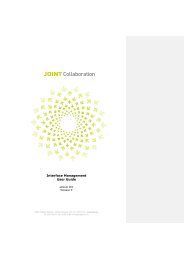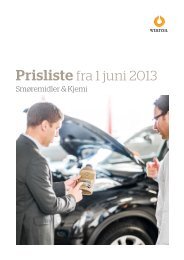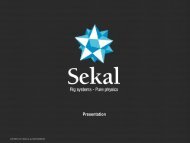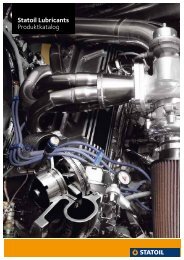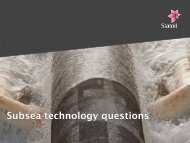Ida Ekblad MarIus Engh anawana haloba lars lauMann - Statoil
Ida Ekblad MarIus Engh anawana haloba lars lauMann - Statoil
Ida Ekblad MarIus Engh anawana haloba lars lauMann - Statoil
Create successful ePaper yourself
Turn your PDF publications into a flip-book with our unique Google optimized e-Paper software.
The physicality (the gum from the artist’s mouth) reads mainly<br />
as an index of contempt; it is a tool, or a sign – an arrow<br />
pointing to the catastrophe of an America that appeared, for<br />
the moment, to proudly, even pornographically, celebrate its<br />
most base and regressive elements. In <strong>Ekblad</strong>’s more recent<br />
work, the focus is on the elements for their own sake, without<br />
there being much of a goal, hierarchy, or direction. More and<br />
more it is the process that is emphasised. Recently, the artist<br />
has been making sculptures by drifting through different cities,<br />
sometimes with friends, wheeling around a trolley filled with<br />
cases of wet concrete. During these perambulations, the artist<br />
finds, in her own words, “tools and bits and things” and sticks<br />
them in the concrete; when it dries, the cases are discarded and<br />
the sculpture is revealed.<br />
The affirmative tradition has often been a musical one, or<br />
rather has looked to music as a model of a self-justifying art:<br />
Cage was of course a composer, and Nietzsche’s early reverence<br />
for Wagner, as well as his evocation of Dionysus as the emblem<br />
of the fullest, purest reality, are both well known. Moreover,<br />
mystics of all kinds have often said that sound is ideal as a tool<br />
for meditation, because a sound cannot really be heard after<br />
it has passed, but only in the present. It is not surprising to<br />
find <strong>Ekblad</strong> calling upon these same energies. Usually she does<br />
this through titles, whether copied directly (Lucy in the Sky<br />
with Diamonds) or, more frequently, as a fragment or variation<br />
(Political Song for Jessica Simpson to Sing). Crucially, though,<br />
the title is often taken from a song that <strong>Ekblad</strong> was listening<br />
to in her studio while working on that piece: it thus refers back<br />
to the moment of creation. Obviously, this moment belongs<br />
to <strong>Ekblad</strong> alone. But the recurring song titles, like some of the<br />
painterly gestures, are indicative of the need to share that<br />
immediacy, to share the moment of exultation, when artist, like<br />
audience, becomes merely a vessel through which energy,<br />
which is beauty, flows.<br />
When language approaches music, when it is closest to song,<br />
it is called poetry. <strong>Ekblad</strong> is, of course, also a poet. She writes<br />
the way she sculpts: by combining and transforming found<br />
elements, whatever they may be, and wherever she finds them<br />
(and one does not have to search very hard for words). As in her<br />
sculptures, she is fond of using local elements: French phrases<br />
for a poem in Paris, for instance. Moreover, her poetry forms<br />
a map of her sensibility; much of what we have been trying to<br />
say here on her behalf, and on behalf of tradition she inherits, is<br />
written in her poems for all to see. There is total receptivity to<br />
the flow of forces, and especially to sound, for instance, in Fare-<br />
Ye-Well: “The chimes of bells she faintly hears/be all ears – Be<br />
ALL ears.” And in O’ Radical Modern Way Of Life there is a list<br />
of sculptural materials, and again attention to the specifics of<br />
the particular moment: “knickknack, bric-a-brac, neglected metal<br />
sheet/– A Radical Punch, brewed on a wee lil’ Credit Crunch.”<br />
There is a final parallel to be made with the great paragon<br />
of the affirmative tradition. Nietzsche took the title The Gay<br />
Science from the Provençal term “La gaya scienza” – the term<br />
that troubadours used in the Middle Ages to refer to their art,<br />
the art of poetry; it was this creative power, which was at the<br />
same time a concrete science of affirmation – this specific<br />
unity of “singer, knight, and free spirit” – that he looked to for<br />
guidance, like a star. Crossing from negation to affirmation is<br />
merely the beginning, and in itself it is no guarantee. But poetry,<br />
whatever poetry is today, or still means (it is not a force or<br />
metaphor like any other, since it encompasses every metaphor,<br />
every force) is there to point the way.<br />
DaviD lewis<br />
25





